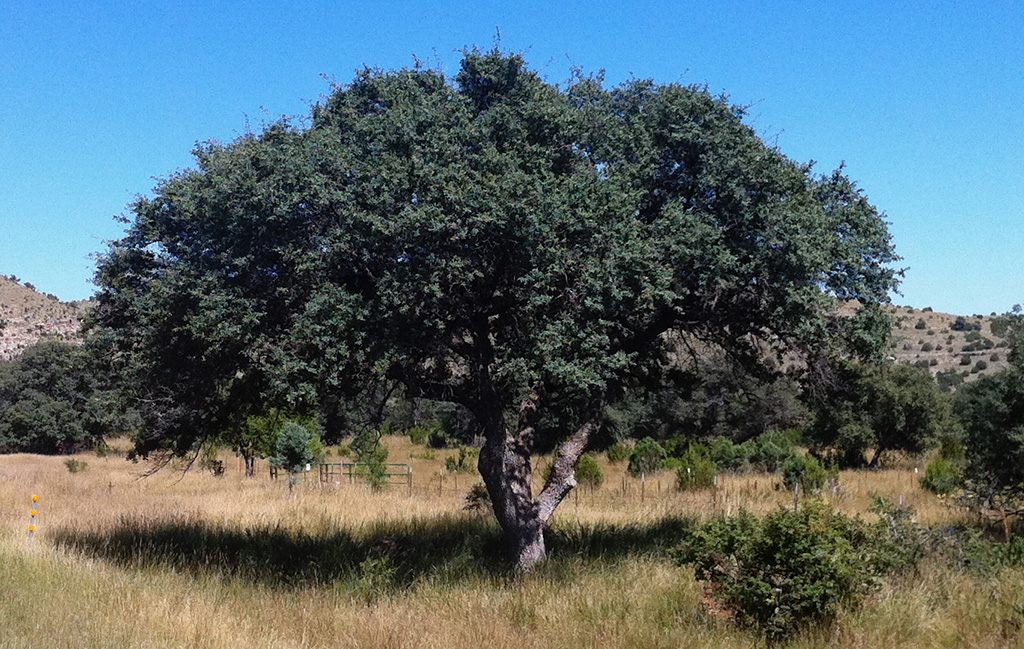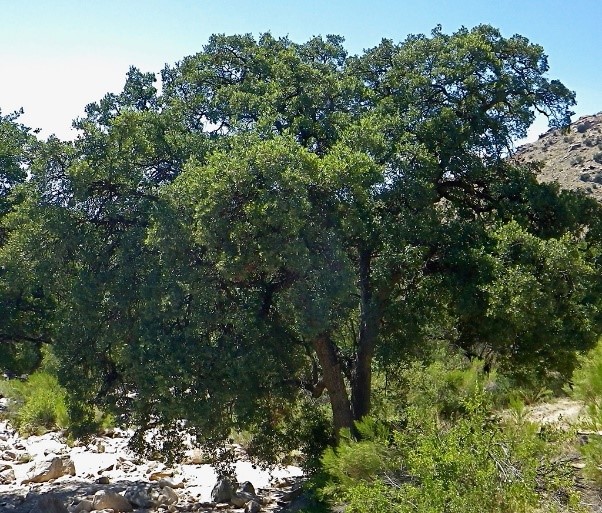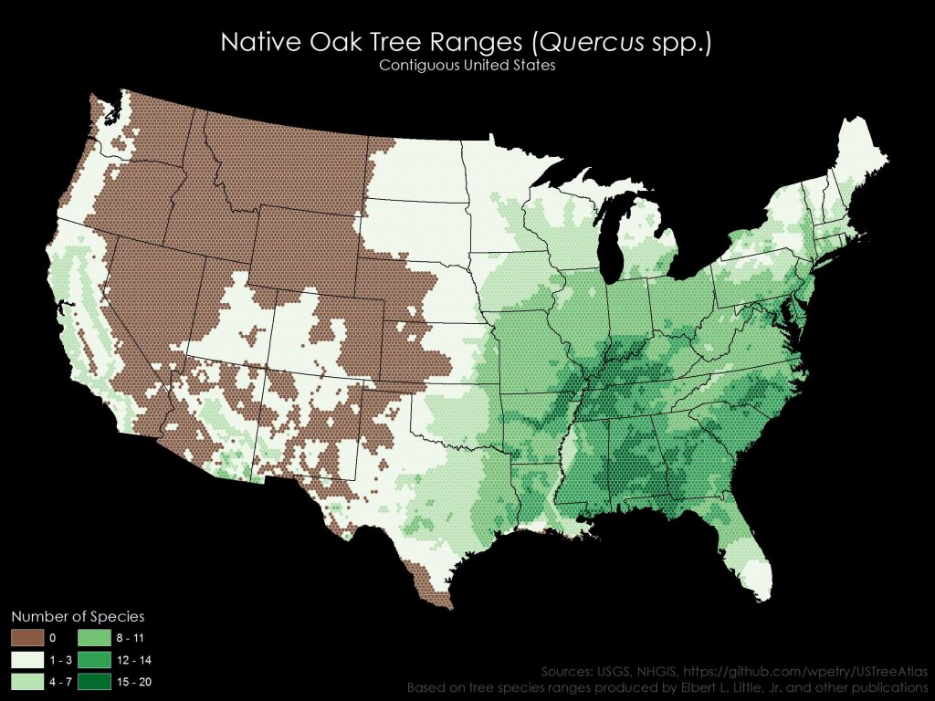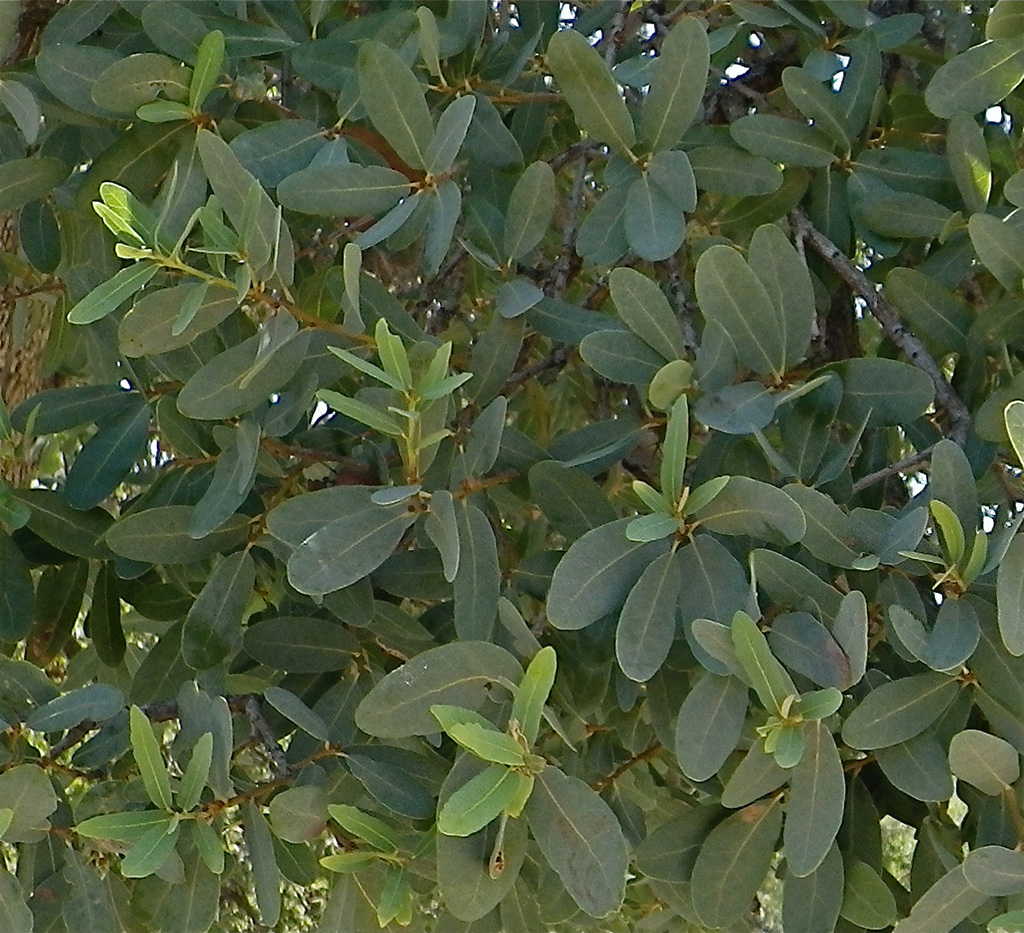Oaks are extraordinary creatures. They are one of the most ecological important genera of trees in the northern hemisphere. They support critical food chains and ecological processes wherever they occur. This is especially true in our Sky Islands region. So, it is not surprising that we picked an oak tree to be our first plant starring in Friday Feature Creature! Please welcome the Mexican Blue Oak (Quercus oblongifolia)
The Mexican Blue Oak belongs to the white oaks group, or the Quercus section of the Quercus genus (there are five sections within the genus in the world). It is more closely related to the Engelmann oak of southern California (Q. engelmannii) than to the California Blue Oak (Quercus douglasii). Even though both share that beautiful blue hue in their leaves, they actually have quite a few big physiological and ecological differences. The more significant being that the Mexican Blue Oak is an evergreen tree, while the California Blue Oak is a true deciduous species.

Woodland or savannah growth habit of Mexican blue oak
Also called Arizona or Sonora blue oak (Encino azul in Spanish), the Mexican blue oak is a remarkable tree capable of thriving in a wide range of habitats thanks to its many adaptations to different environmental conditions, including drought. At its lowest elevational range, slightly below 1,500 m (~ 5,000 ft), the blue oak can be seen scattered across the grassland landscape. Dominating and shaping savannah-like ecosystems called oak woodlands

Riparian growth habit of Mexican blue oak
where they sustain hundreds of species of animals, plants, and fungi that depend on their acorns and leaves. Their shade, and their underground root fabric, provides resources to a myriad of soil microbes and invertebrates. At lower elevations (~ 3,000 ft), you can find Mexican Blue Oaks along canyons and ravines where they are part of our wonderful and unique riparian ecosystems of the Sky Islands region. Here however, blue oaks grow taller and the pale blue hues of their leaves typically gives way to bright green tones.
So, why do Mexican blue oaks look blue?
The color blue in the leaves is called glaucescence (from the Latin glaucus, meaning “bluish-grey”) and it is the optical result of a powdery wax coating on their leaves. It is an extraordinary adaptation to environments with extreme amounts of UV radiation, such as deserts and mountains. Plants need to protect their leaf tissue from the damaging effects of too much sun. Some studies have found reflectance levels of UV-B radiation of up to 83%. We could say Mexican Blue oaks don’t need to worry about wearing any sunscreen!

Diversity of oaks in the United States.
Before you go take a look at the map above. What do you see? As with so many other species, our Sky Island region is an oasis of diversity for oaks. Most oaks in the United States are found east of the great plains or west of the Rocky Mountains, except for that oak diversity hotspot that you see in southern Arizona and southwestern New Mexico. So, next time you go outdoors take a moment to say hello to a Mexican Blue Oak, you probably won’t find them anywhere else in the world!
Want to spot a Mexican Blue Oak? Look for:
- A small (16 to 18 ft) evergreen tree, typically 1.5 ft in diameter and with a broadly spreading crown
- Bark is about 1.2 inches thick and has a white-gray coloration
- Leaves are oblong and small (1 to 2 inches long) with entire margins. Their species name, oblongifolia literally means oblong leaf and is a great way to remember what to look for!
- Solitary pistillate flowers and multiple staminate flowers in catkins.
- Acorns are 0.5 to 0.7 inches long with a very thin shell surrounding one seed.

Foliage of Mexican blue oak
Photo credits: Oaktopia
